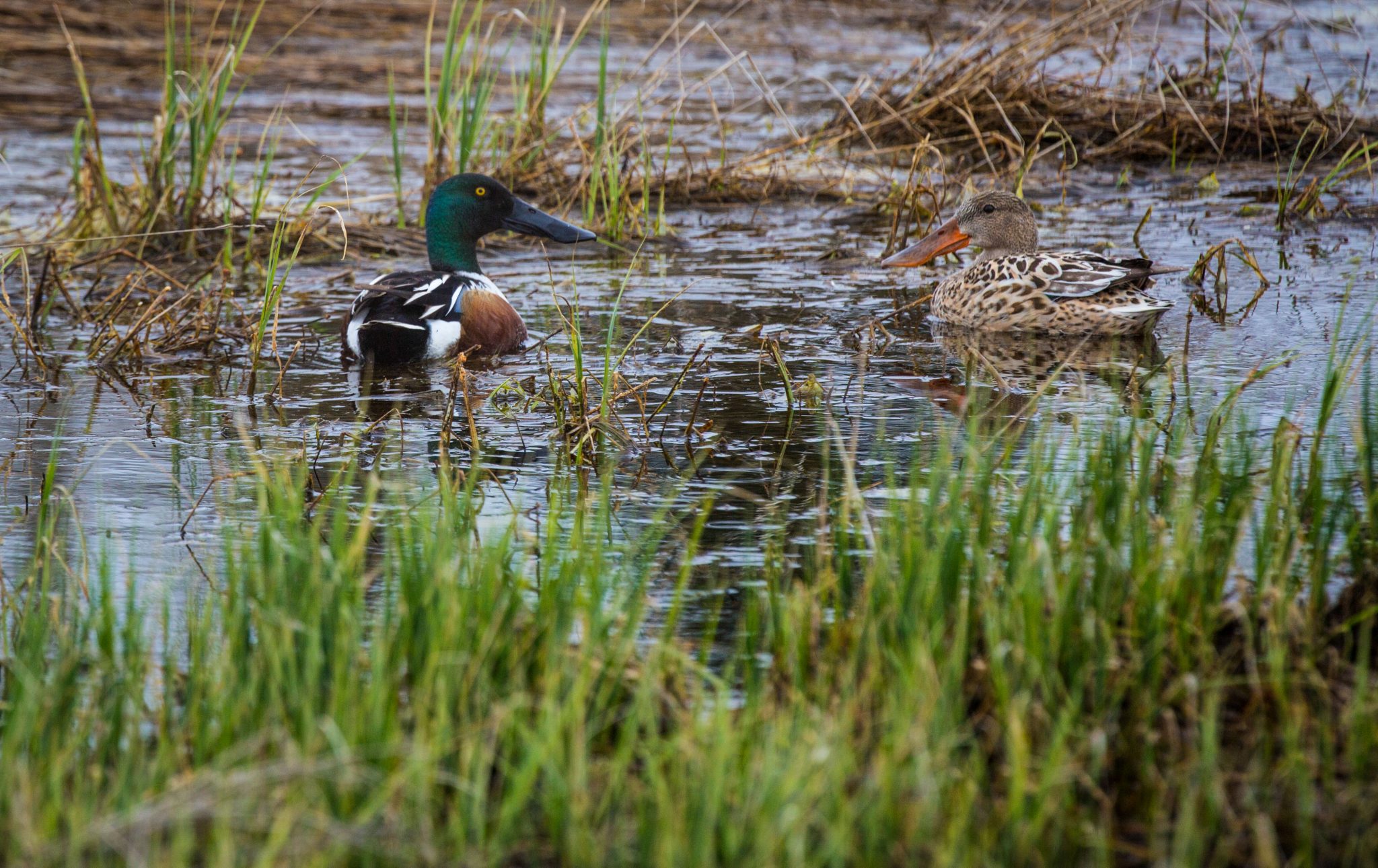Conserving our wetlands
The prairies are one of the most significant wetland areas in North America and Calgary is home to thousands of those prairie wetlands. Due to the presence of water, wetlands are a rich source of biodiversity. However, today it is estimated that 90 percent of the pre-settlement wetlands in Calgary have been lost to development.
Why we need wetlands
Healthy wetlands slow water flow during flood peaks, hold water during droughts and replenish water in the atmosphere through evaporation. They also provide valuable habitat for a diverse range of plants and animals. More than 250 species of birds use the Inglewood Bird Sanctuary as a resting place during spring and fall migration, and over 46 species of birds have been identified during initial vegetation assessment at Ralph Klein Park.
Wetland vegetation also helps purify the water before it recharges local water tables, eliminating more than 90 per cent of phosphorus and water-borne pathogens. But nitrates from lawn fertilizer and phosphates from cleaning products that wash into storm sewers can reduce wetland vigour by promoting excessive algae growth that chokes out wetland vegetation. Preventing nutrient run-off will help wetlands purify our water.
Learn more in Calgary's Wetlands - At Work For You.

Constructed wetlands
Ralph Klein Park
The Shepard Wetland at Ralph Klein Park was constructed as part of the stormwater quality retrofit program to help solve a stormwater management issue for the east side of Calgary. In the past, stormwater from east Calgary was being discharged into the Western Headworks Canal (part of the Western Irrigation District’s irrigation system). Concerns over the quality of water entering this system led to Alberta Environment and the City jointly investigating and implementing a plan to manage stormwater within this 6,000 hectare area.
This wetland functions as both a stormwater storage facility and a treatment wetland that naturally filters stormwater, improving the quality of stormwater before it is discharged south to the Bow River. At 156 hectares (385 acres), it is the largest constructed stormwater treatment wetland in Canada.
The wetland can store over 6 million cubic meters of water. This means it has enough capacity to handle a 1 in 100 year flood. A flood of this type will fill the wetland, making it look more like a lake (in any given year there is a 1% chance that this type of flood event may occur).
How this wetland works
A diversion channel intercepts water from the Western Headworks Canal during major rain events, channelling it 4 km south to the wetland at Ralph Klein Park. The stormwater enters the wetland in the NW corner of the park where it flows into two large forebays. This is where the initial cleaning process begins; the sediment (dirt) and heavy materials slowly sink to the bottom at this stage in the process.
The water is then dispersed into five wetland cells. Through the growth and decay of plants within the wetland cells, in combination with the micro-organisms associated with each of them, nutrients and pollutants are removed from the water.
In each cell there are several berms that create a longer flow path for the water, which aids in the cleaning process. Each treatment cell is designed to operate under base flow conditions of approximately 30 cm (1 foot) of water depth. Water depth can be up to 3 metres during a severe storm event, which submerges the internal berms, but the water remains contained by perimeter dykes and existing land forms. Once the water has travelled through these cells, it is then released into a common discharge bay that empties into a ditch that leads south to the Bow River, 10 km away.
Typically, it requires 2 – 3 years for wetland plants and vegetation to establish and the wetland to function as intended. Ongoing vegetation assessments have been an opportunity for The City to gain more knowledge regarding wetland maintenance and monitoring. Over 46 species of birds have been identified during initial vegetation assessment at Ralph Klein Park, which is a positive indicator of wetland health.
About Calgary's Wetland Conservation Plan
Wetlands may be protected as Environmental Reserve through the Municipal Government Act (MGA), or through provincial legislation through the Water Act and Public Lands Act, but although these mechanisms may be used for wetland protection, they do not ensure that all wetlands are protected.
That’s why City Council approved the Wetland Conservation Plan in 2004, making Calgary one of the first municipalities in Canada to adopt a wetland protection policy that provides procedures for the protection of our priority urban wetlands.
For more information, contact The City of Calgary Parks.

